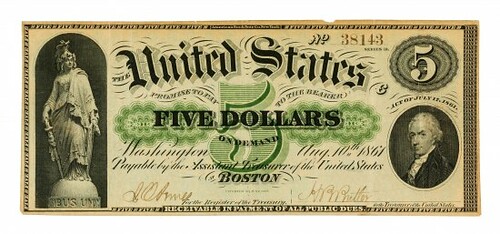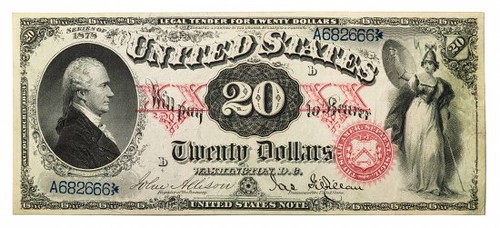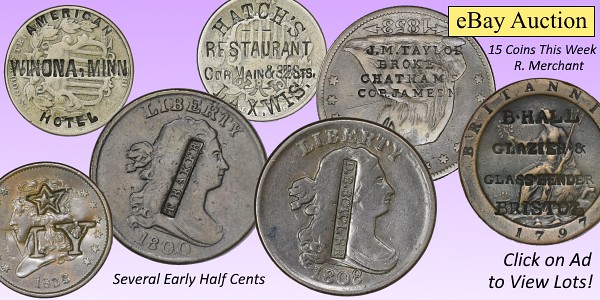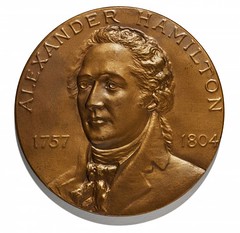
PREV ARTICLE
NEXT ARTICLE
FULL ISSUE
PREV FULL ISSUE
ALEXANDER HAMILTON IN NUMISMATICSJennifer Gloede of the National Numismatic Collection published the article Hamilton: How money tells his story earlier this year on the National Museum of American History blog O Say Can You See. It was highlighted on December 14 among the blog's "American history must-reads of 2018" - Congratulations. -Editor
President George Washington appointed Hamilton as the first United States Secretary of the Treasury in 1789, a position Hamilton held until 1795. During his term, Hamilton set up America's financial system, favoring a strong central government. This made him unpopular with some of his contemporaries, including Thomas Jefferson and James Madison, who favored state government. Despite opposition, Hamilton called on Congress to establish a national bank and the U.S. Mint. His policies, based on the Bank of England and European economic systems, became the foundation of United States economics. After leaving office, Hamilton returned to his law practice and continued to be influential in politics until 1804, when he was shot by Aaron Burr in a duel and died from his wounds. President George Washington appointed Hamilton as the first United States Secretary of the Treasury in 1789, a position Hamilton held until 1795. During his term, Hamilton set up America's financial system, favoring a strong central government. This made him unpopular with some of his contemporaries, including Thomas Jefferson and James Madison, who favored state government. Despite opposition, Hamilton called on Congress to establish a national bank and the U.S. Mint. His policies, based on the Bank of England and European economic systems, became the foundation of United States economics. After leaving office, Hamilton returned to his law practice and continued to be influential in politics until 1804, when he was shot by Aaron Burr in a duel and died from his wounds. Here are a couple of the portraits of Hamilton illustrated. -Editor  1861 $5 Demand Note  1878 $20 Legal Tender note To read the complete article, see:  Wayne Homren, Editor The Numismatic Bibliomania Society is a non-profit organization promoting numismatic literature. See our web site at coinbooks.org. To submit items for publication in The E-Sylum, write to the Editor at this address: whomren@gmail.com To subscribe go to: https://my.binhost.com/lists/listinfo/esylum All Rights Reserved. NBS Home Page Contact the NBS webmaster 
|
